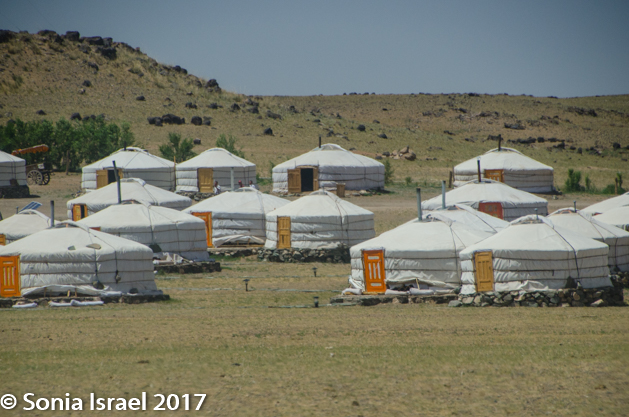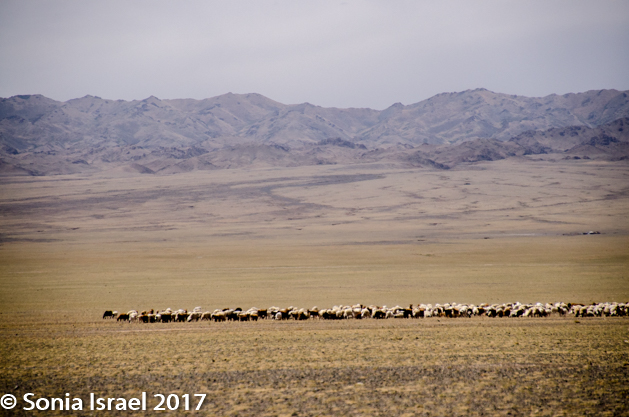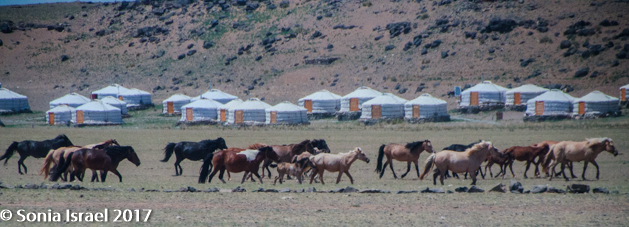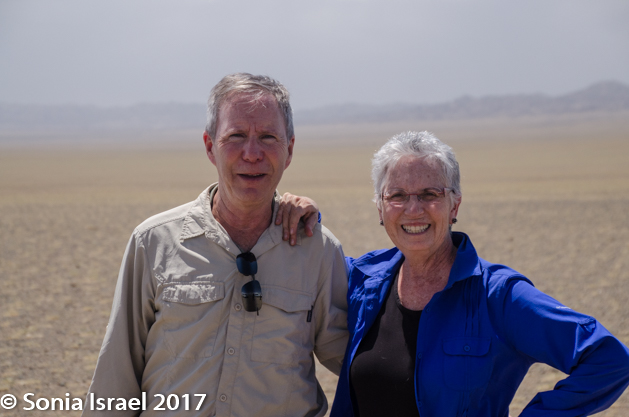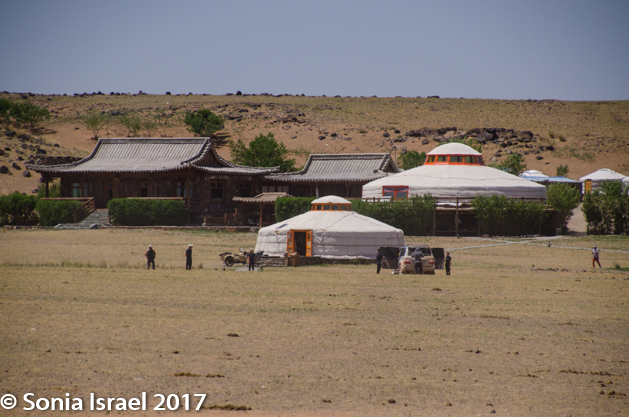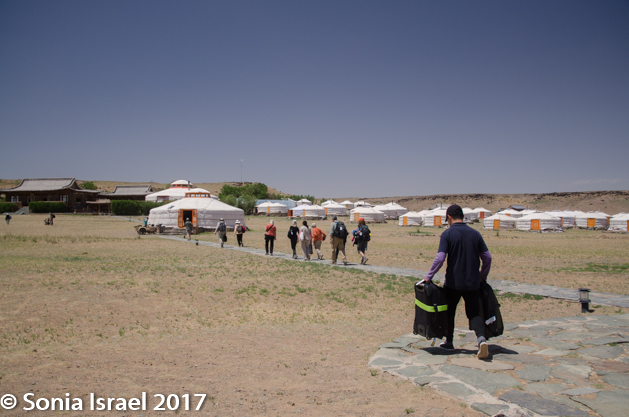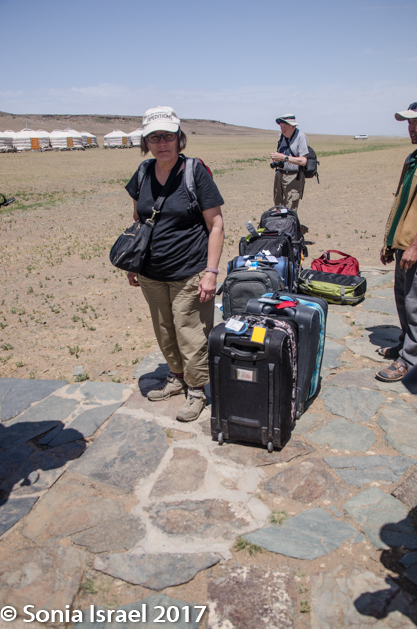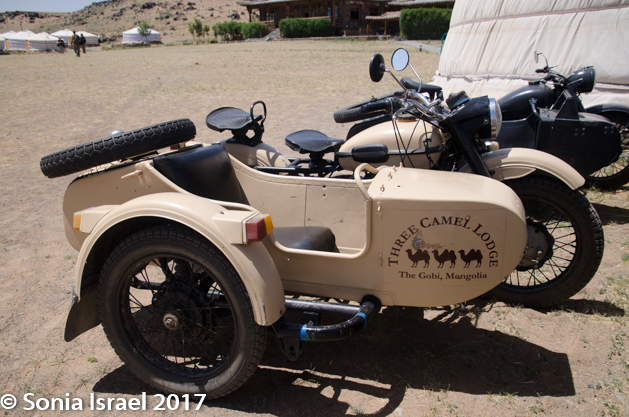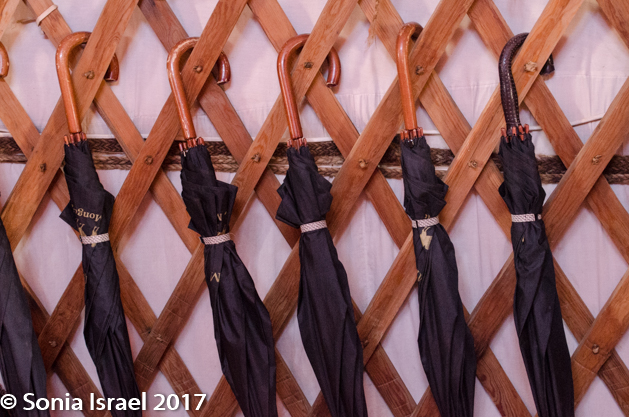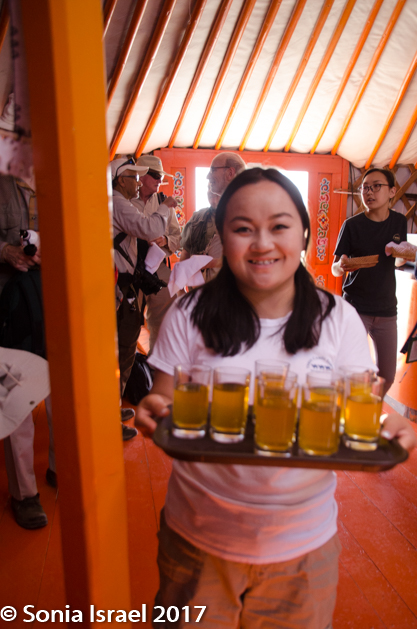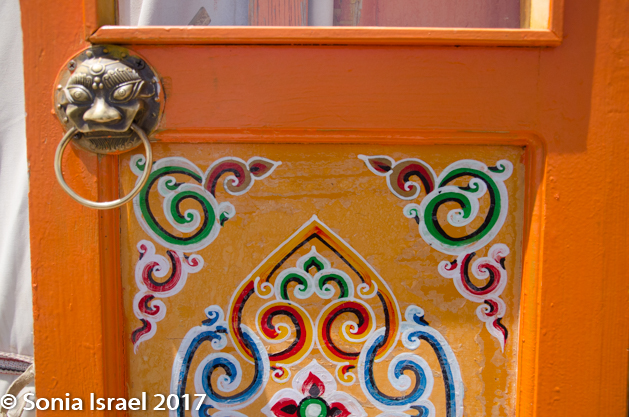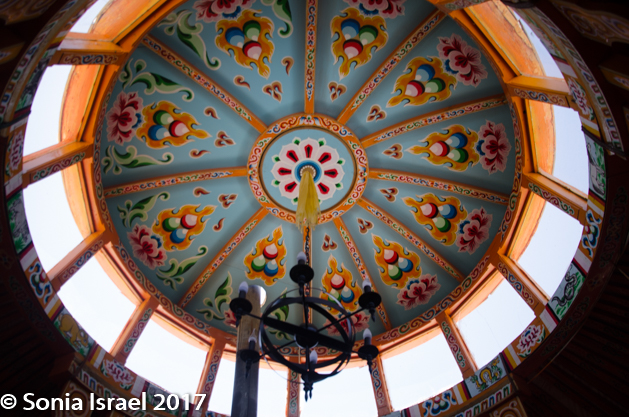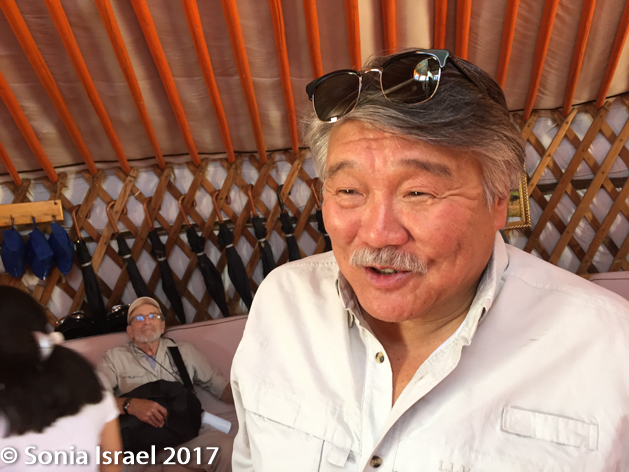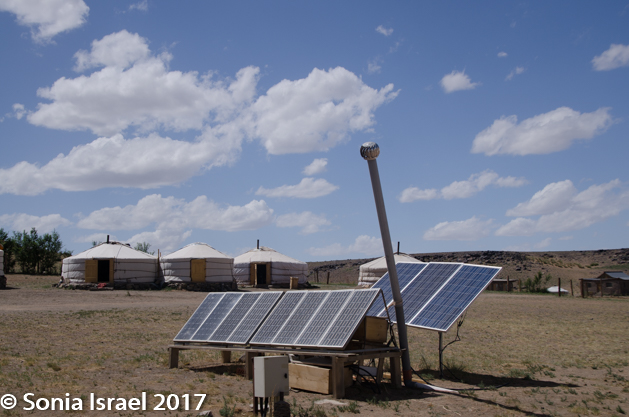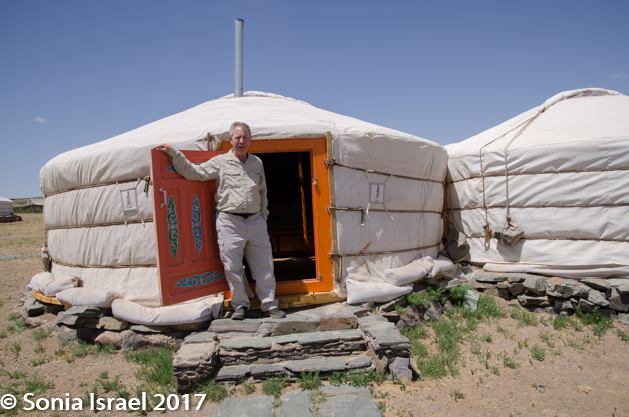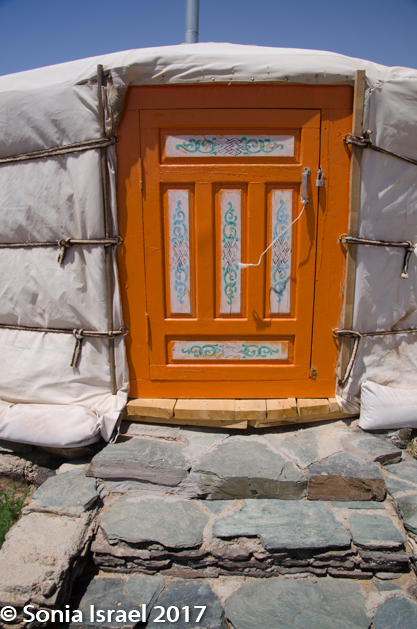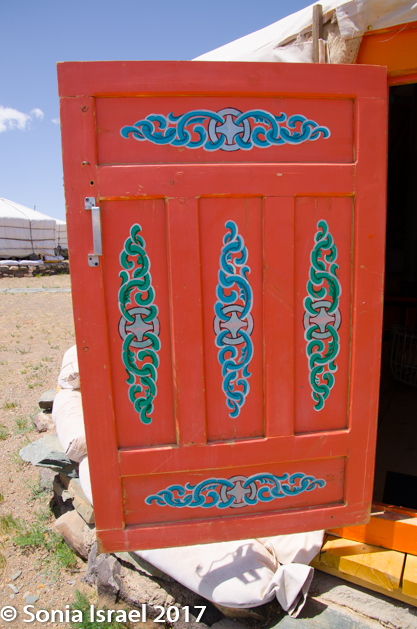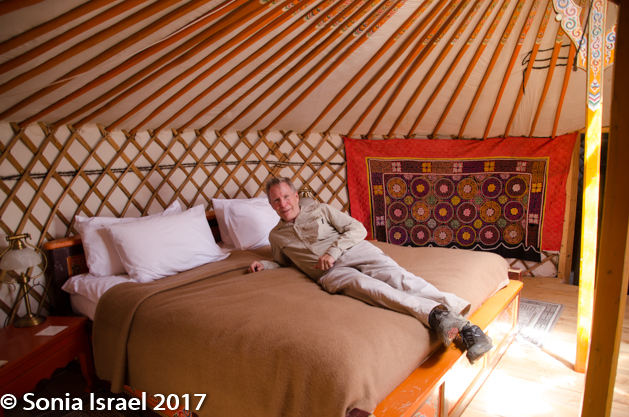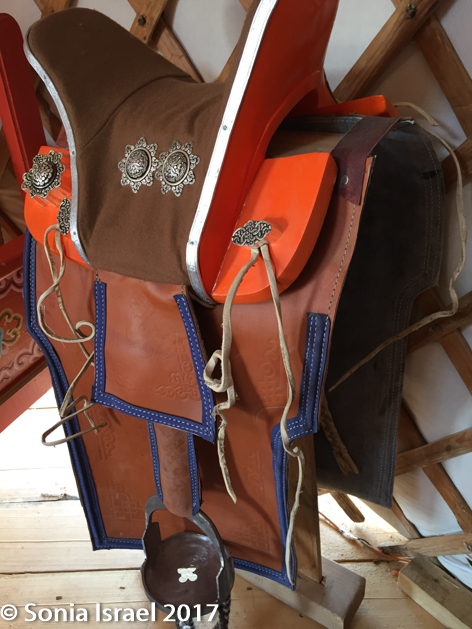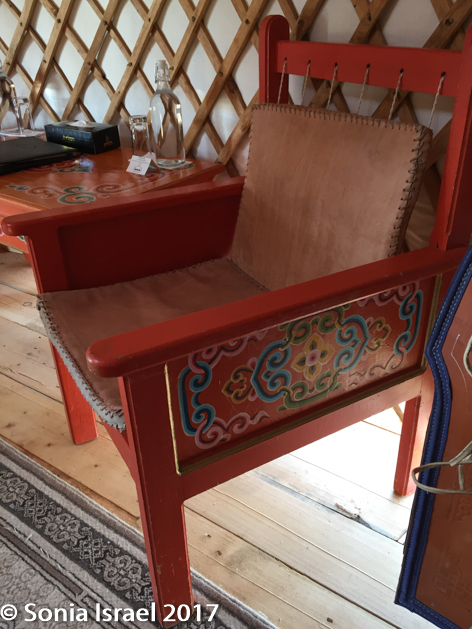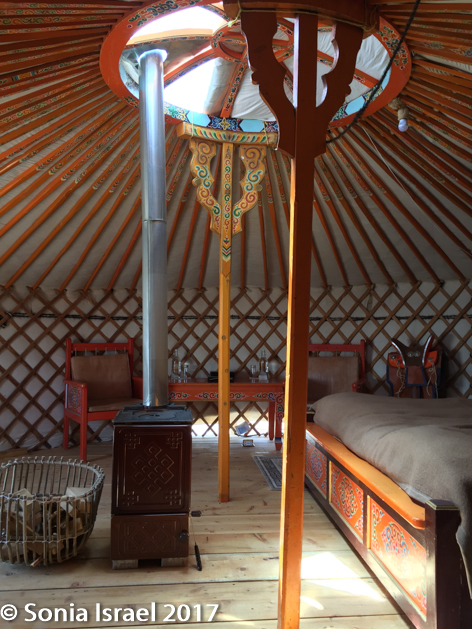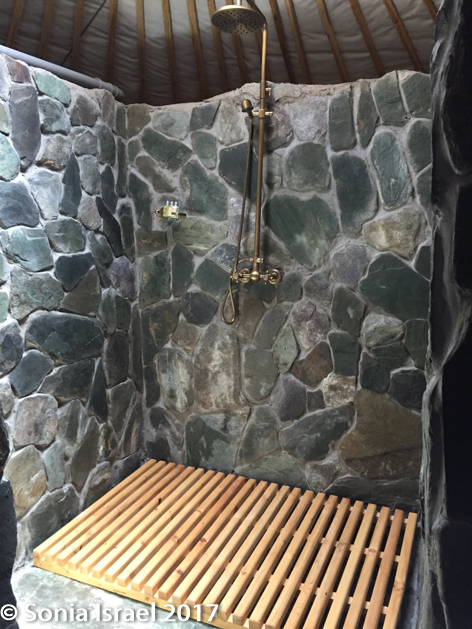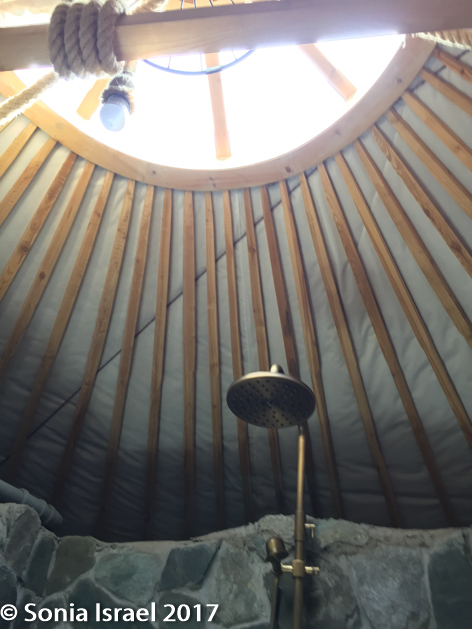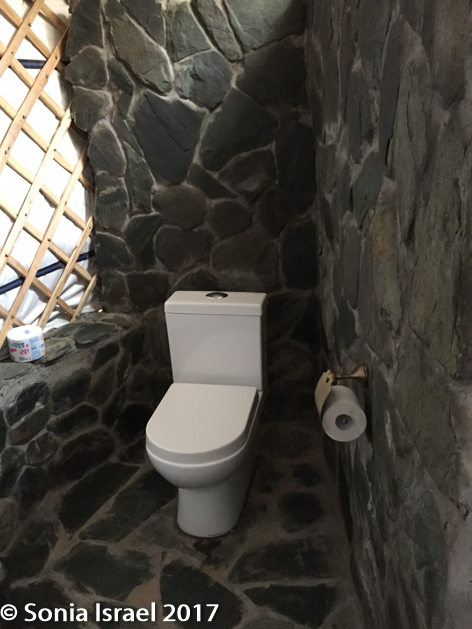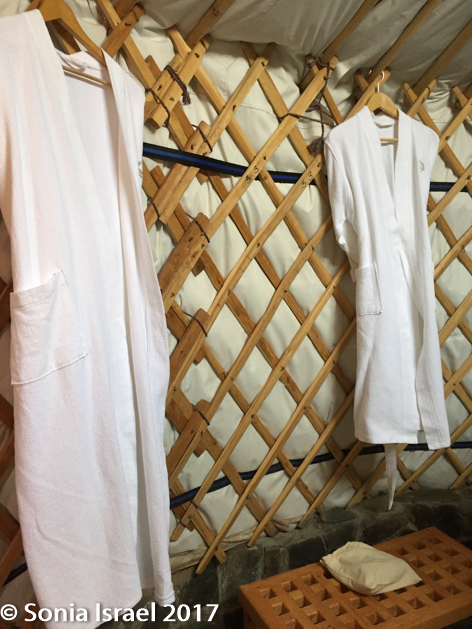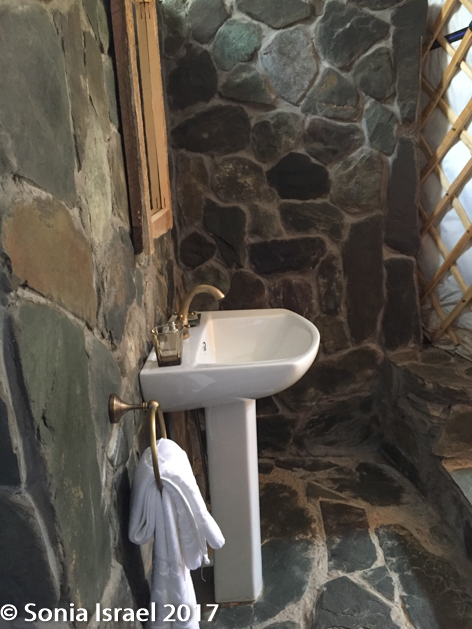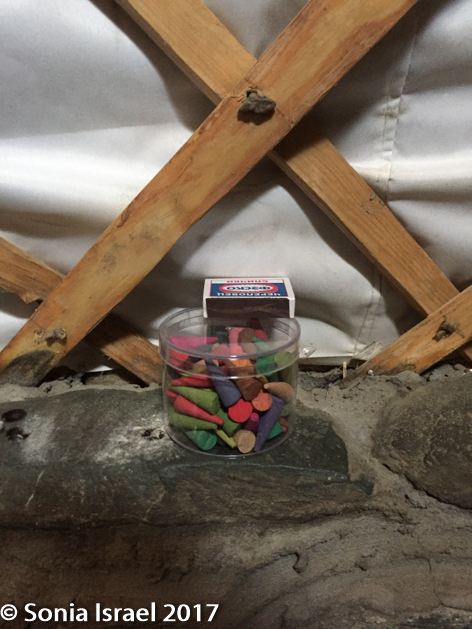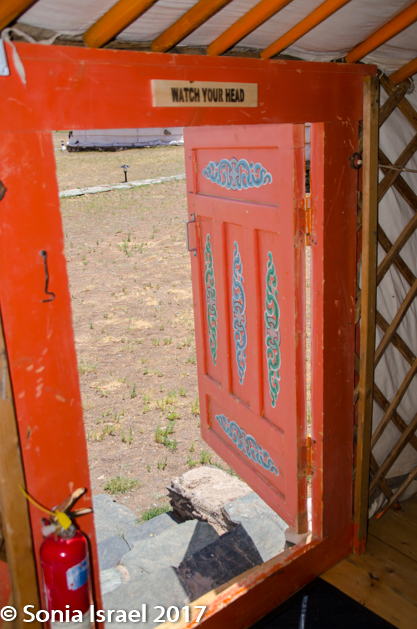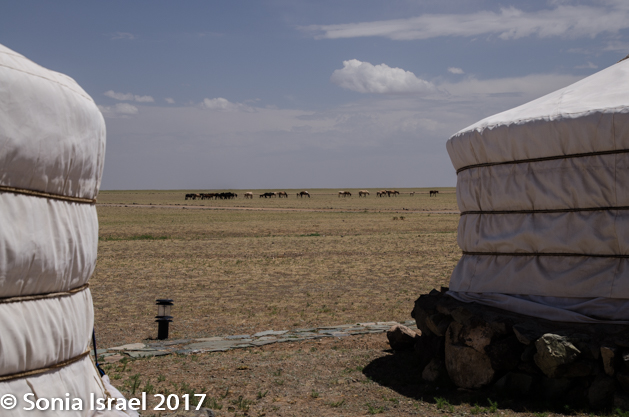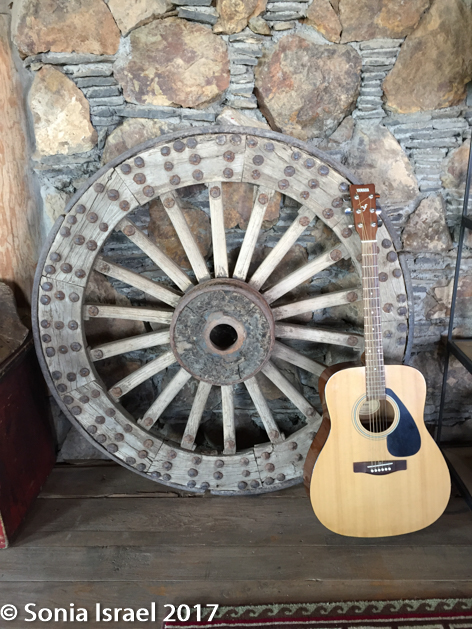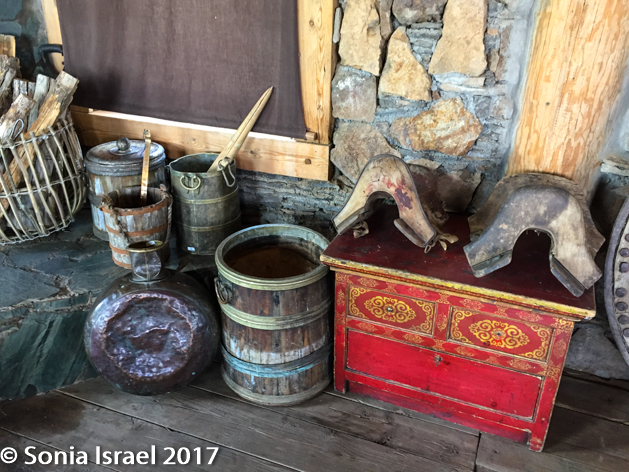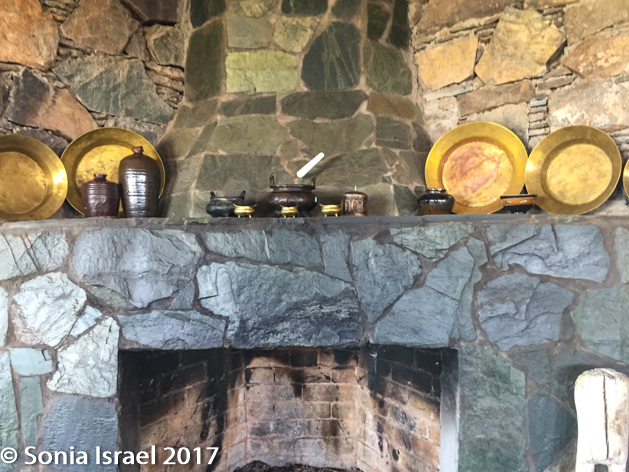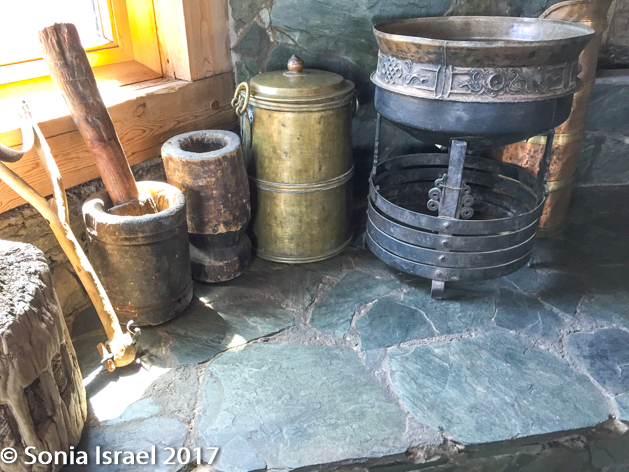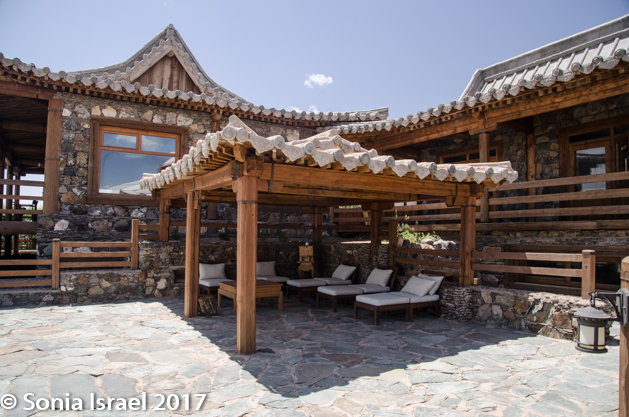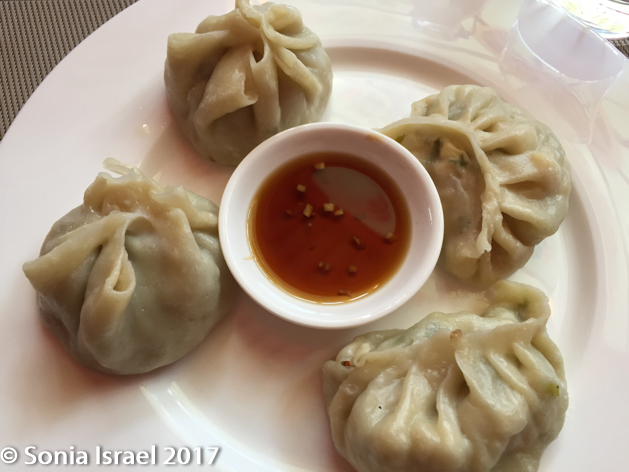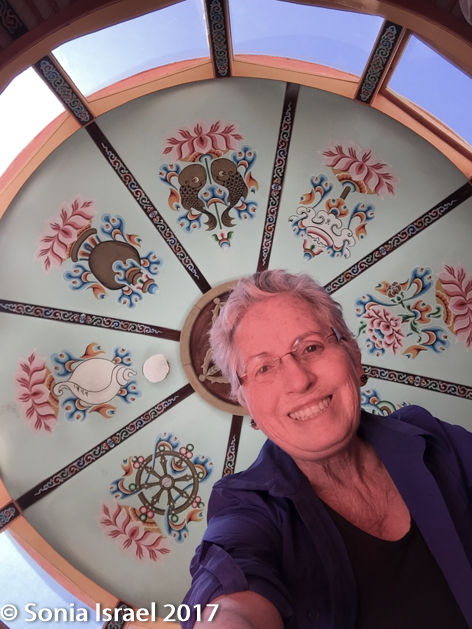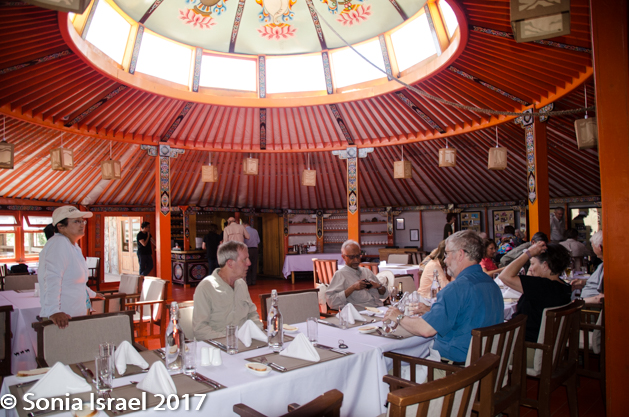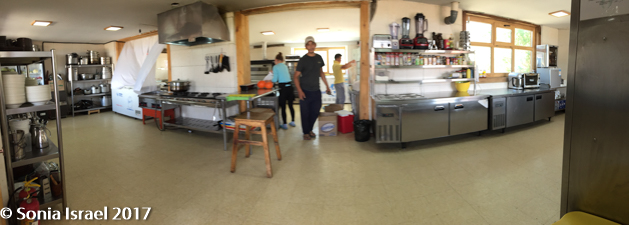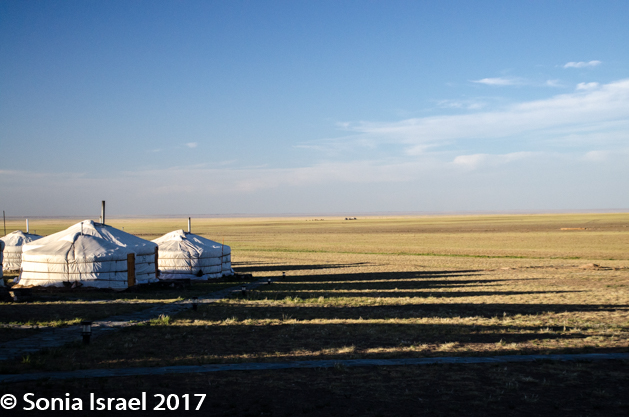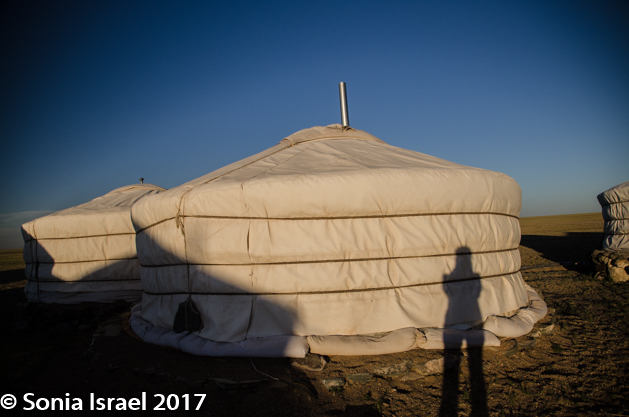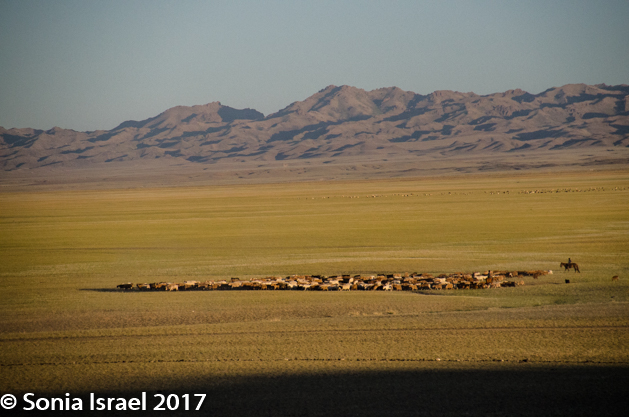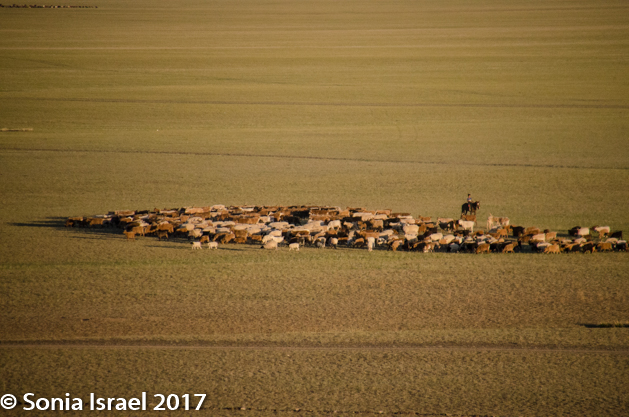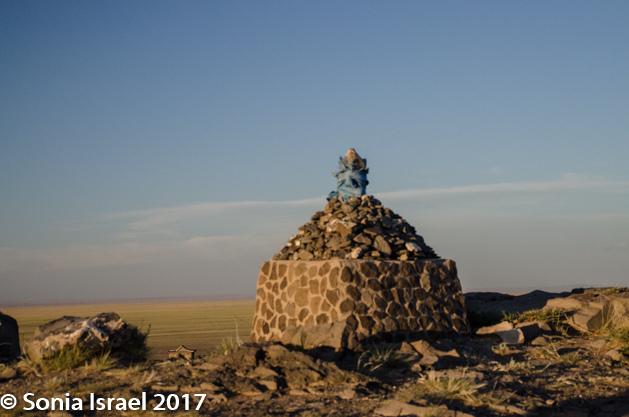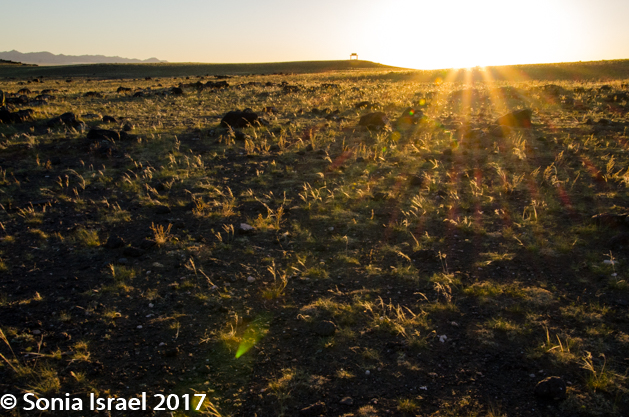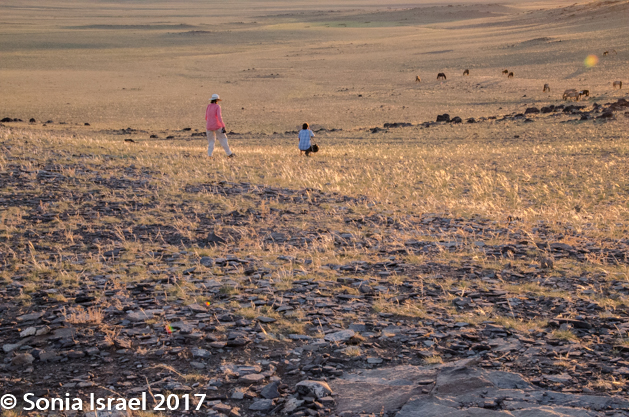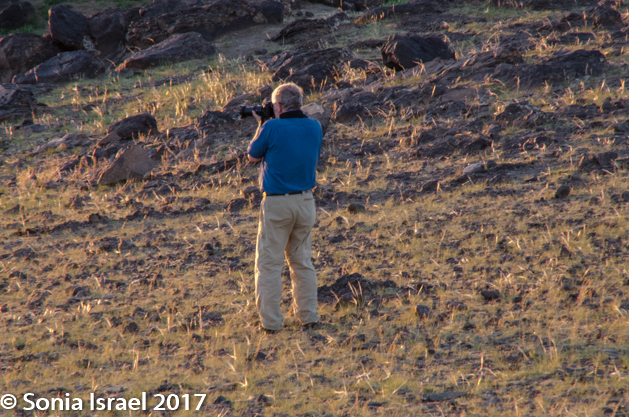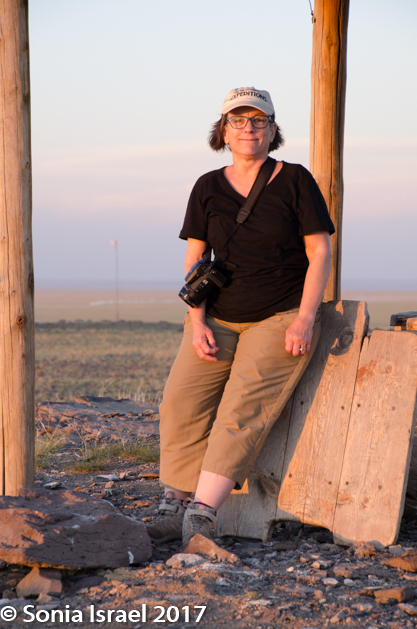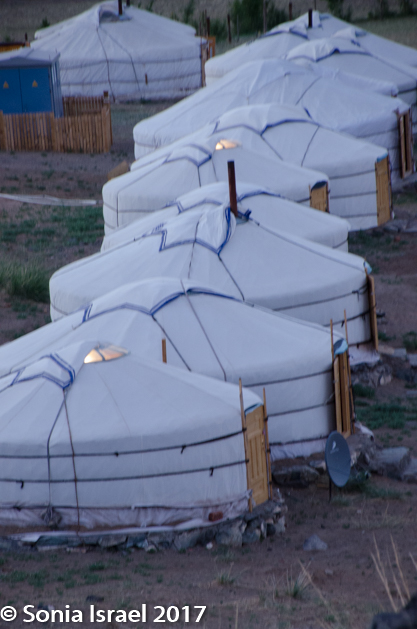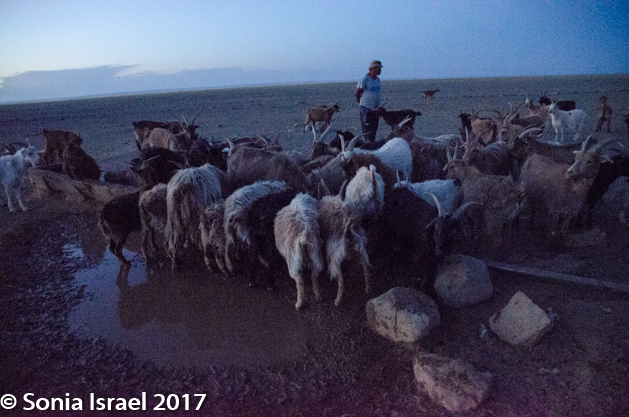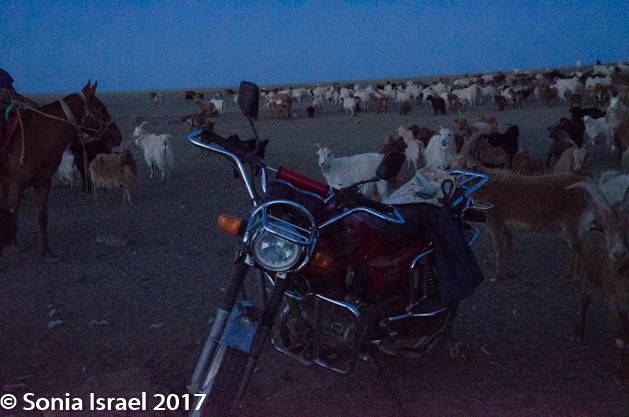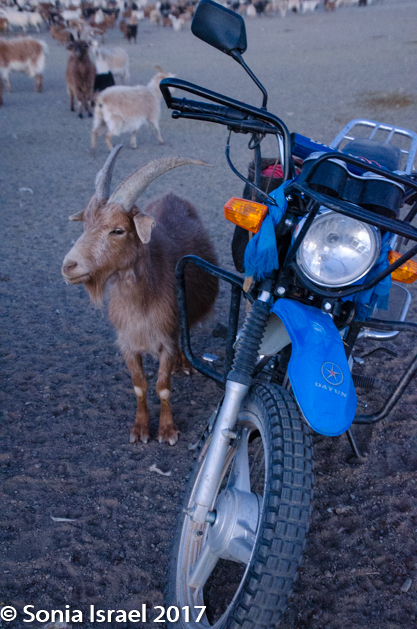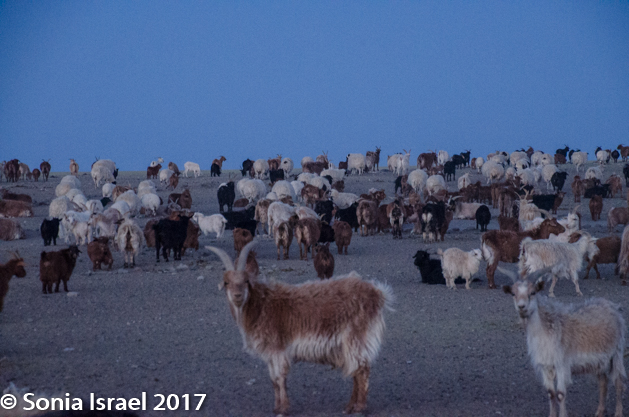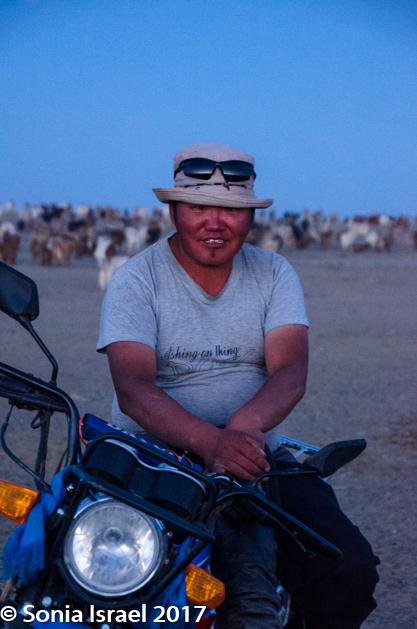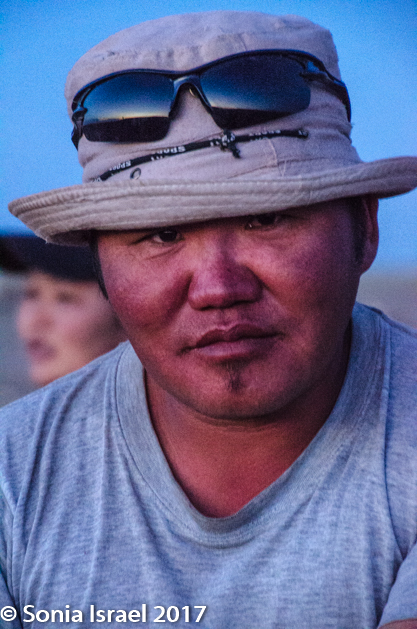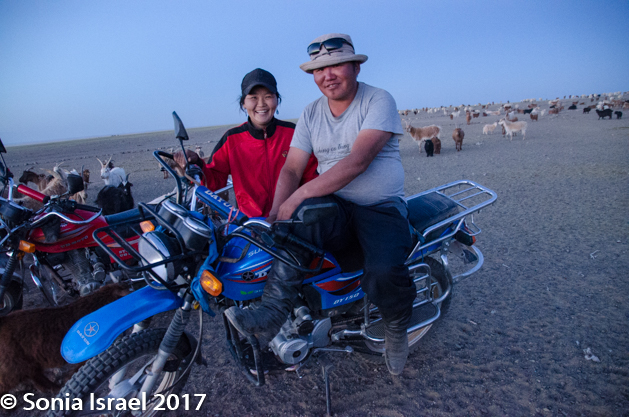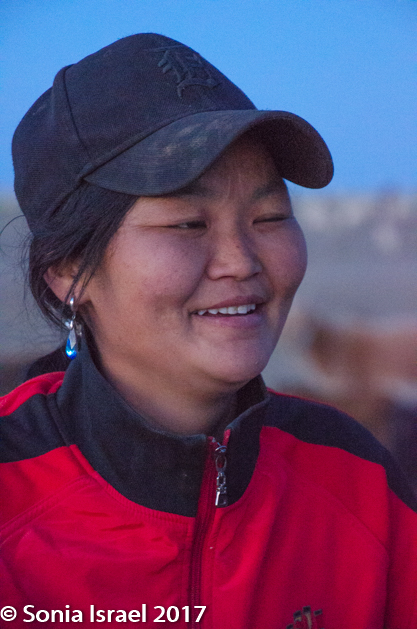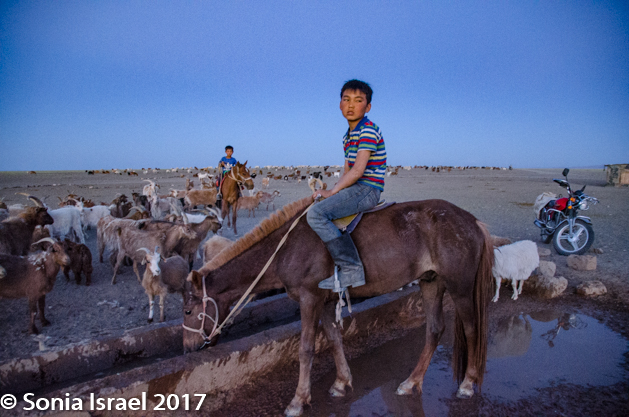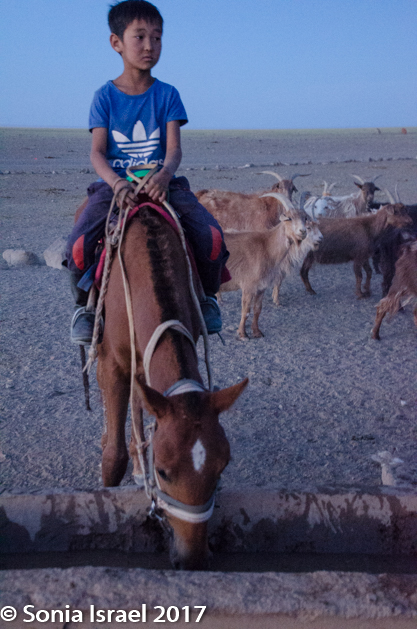National Geographic Trip to Mongolia, Day 5, June 15, 2017
Three Camel Lodge
After our early morning flight and our morning introduction to the Gobi, we finally, finally arrived at the Three Camel Lodge. The first thing we saw was a large herd of horses milling about a water trough. Then behind the horses were the gers, all lined up with their brightly painted orange doors. This was not your usual ger camp. This was a place that “offers a luxurious take on the traditional nomadic lifestyle.” That’s what the website said. But I don’t think any nomads live like this.
The lodge is owned and operated by Jalsa (rhymes with salsa, as he said) 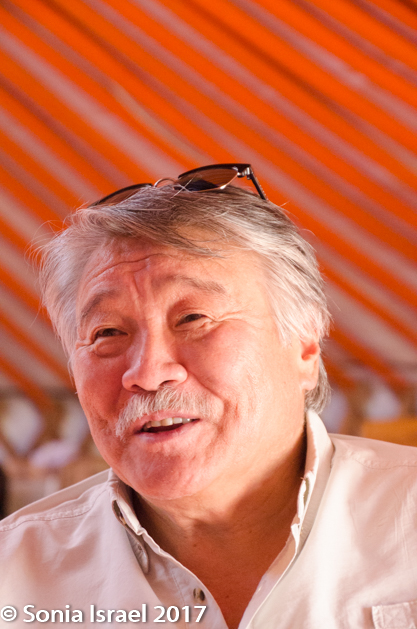 Urubshurow, a Mongolian who grew up in New Jersey. He felt he wanted to give back to his homeland, so he moved here and in 2002 opened up the first and only luxury eco-lodge in the Gobi, making sure to carefully consider the preservation of the environment, culture and people of the Gobi. Most of the staff were raised in the Gobi so they all had plenty of stories to tell us. Many grew up in nomadic families. And although the lodge is closed in the winter, they are paid their salaries year round. The Three Camel Lodge, which is a National Geographic Unique Lodge of the World, was voted in 2009 as one of the Top 50 Ecolodges by National Geographic Adventure magazine.
Urubshurow, a Mongolian who grew up in New Jersey. He felt he wanted to give back to his homeland, so he moved here and in 2002 opened up the first and only luxury eco-lodge in the Gobi, making sure to carefully consider the preservation of the environment, culture and people of the Gobi. Most of the staff were raised in the Gobi so they all had plenty of stories to tell us. Many grew up in nomadic families. And although the lodge is closed in the winter, they are paid their salaries year round. The Three Camel Lodge, which is a National Geographic Unique Lodge of the World, was voted in 2009 as one of the Top 50 Ecolodges by National Geographic Adventure magazine.
Jalsa is also the president of the sister company, Nomadic Expeditions, which supplied our local guides and cars. Our drivers were incredible. They drive during tourist season, and work in the coal mines off season.
I imagine that Jalsa is very influential in Mongolia as he has been an adviser for all seven of Mongolia’s Prime Ministers and two Presidents since its democratic transition in 1990, on tourism development and environmental protection legislation. The local nomads also greatly benefit from Jalsa’s vision as he helps out those nomads who have lost their animals and he rebuilt the community well which is now used by nomads and local families to water their herds of livestock. Jalsa does charge for the water, but at a very, very low rate of less than a penny per animal. And watching (and photographing) the nomads and their animals in different lights throughout the day was one of the highpoints of being here.
The lodge itself is modeled after traditional Buddhist temple-style architecture, which means in part that it was built without any nails or ironwork. The paths and buildings are made of unprocessed natural stone .
But I am getting ahead of myself. We climbed out of our cars, glad to have finally arrived. We entered a large, very large ger which was the reception area and gift shop. We were welcomed with warm towels and a glass of iced juice. And Jalsa came and introduced himself. He told us his story (as I relayed above) and made us feel at home. And he taught us the following trational Mongolian proverb, which I really liked: “While your father is alive, make as many friends as you can. While your horse is alive, travel as many lands as you can.”
We were each assigned a ger, which had the name of one of the local animals, not a number, and then directed to the large map on the wall to find the location. Our ger was the Sable. But of course we were also guided by the staff (who at night carry flashlights to help light your way).
The gers were lined up along paths that crisscrossed each other. And in-between the gers were solar panels. The strength and power of the sun. You can sure feel that in the desert.
Andy and I entered our ger and just stood there in amazement. It was a traditional Mongolian felt ger, but much more luxurious. And there was a second ger attached to the first. The main ger had a large double bed, the ever present stove for heat (which we did not need), two comfortable chairs, a red saddle and other pieces of art that Jalsa has collected over the years. And electricity and outlets! The second, attached ger was our bathroom, with a stone floor, stone shower, stone wall partitions and plenty of hot water. We did need to be mindful of water usage, but still, it was a lovely shower. There were slippers and robes and of course shampoo and soap (remember at the other ger camps we had to have our own soap). And in keeping with Mongolian tradition, each ger has a southward-facing entrance, so we could look out at the unobstructed views of the desert and the Gobi-Altai Mountains.
We settled in, unpacked and headed to the common lounge/bar area. The lounge is decorated with all the artifacts that Jalsa has collected over the years, including Mongolian musical instruments and dinosaur bones. There was a full bar and I went over to order a glass of wine. Turns out, like in the other camps, you can only order wine by the bottle. But Jalsa was sitting there and he told the bar-tender that I could have just a glass and in fact, all in the National Geographic crowd could have wine by the glass. And then he told me that my wine today was on him, and he winked and said, “but don’t tell everyone else.” Jalsa and I had a lovely conversation. What an interesting man he is. And a good, honest man. I felt like he was the epitome of Mongolian people. Kind. Generous. Welcoming. Gracious.
Mongolian Cuisine
It was then time for dinner. Our group had one long table that was reserved for us for all our meals. The restaurant, called the Bulagtai, is run by Chef Munkhsetseg. It is built like one very large ger, beautifully painted with a stunning toonu (opening) at top. I had thought that I would lose weight in Mongolia. But the food was fabulous, especially here. There was a Russian influence for some of the dishes. In general, Mongolian cuisine is rooted in the nomadic history, which means there is lots of dairy (from sheep, goats and cows) and meat (from sheep, goats, cows and horses), but very little pork, chicken or vegetables. Two of the most popular dishes are Buuz (a meat filled steamed dumpling) and Khuushuur (a sort of deep-fried meat pie). Milk is almost sacred in Mongolia. The nomads have developed a number of unique dairy products made from goats, sheep, cows, yaks and mares. Milk is also used in rituals such as tossing milk into the air or sprinkling it on a person or animal or object as an offering to the spirits. Cheese is made from cattle, yaks, goats and sheep.
- Lunch
But the food we had at the Three Camel Lodge could challenge any high ranked restaurant anywhere in the world. And while vegetables and salads are not common here, the Three Camel Lodge has it own greenhouses and constructed small family-run farms to provide supplies of fresh vegetables, meat and eggs for its guests as well as for the local ger camps (another way they give back to the community). And the best home made bread!
Another Mongolian Sunset
After dinner some of us wandered up the mountain to watch the sun set. There was an ovoo at the top along with 360 degree views. On one side were the mountains and the watering hole full of sheep and goats and horses. On the other was a valley with a few horses grazing. And the tufts of grass were literally glistening as the sun fell and reflected on them.
We watched the sun set for a bit (not the most beautiful sunset we’ve seen here) and then wandered back down the mountain and walked over to the watering hole. A nomad family was there, herding their animals, with motorcycles and trucks. Once all the herding was on a horse. Now that horse has been replaced with a motorcycle. The children smiled at us and posed. The adults did too. The light would have been perfect had we walked over a bit sooner (as some of our friends did), but we still got to observe nomadic life on the desert at dusk. Not a bad thing at all.
